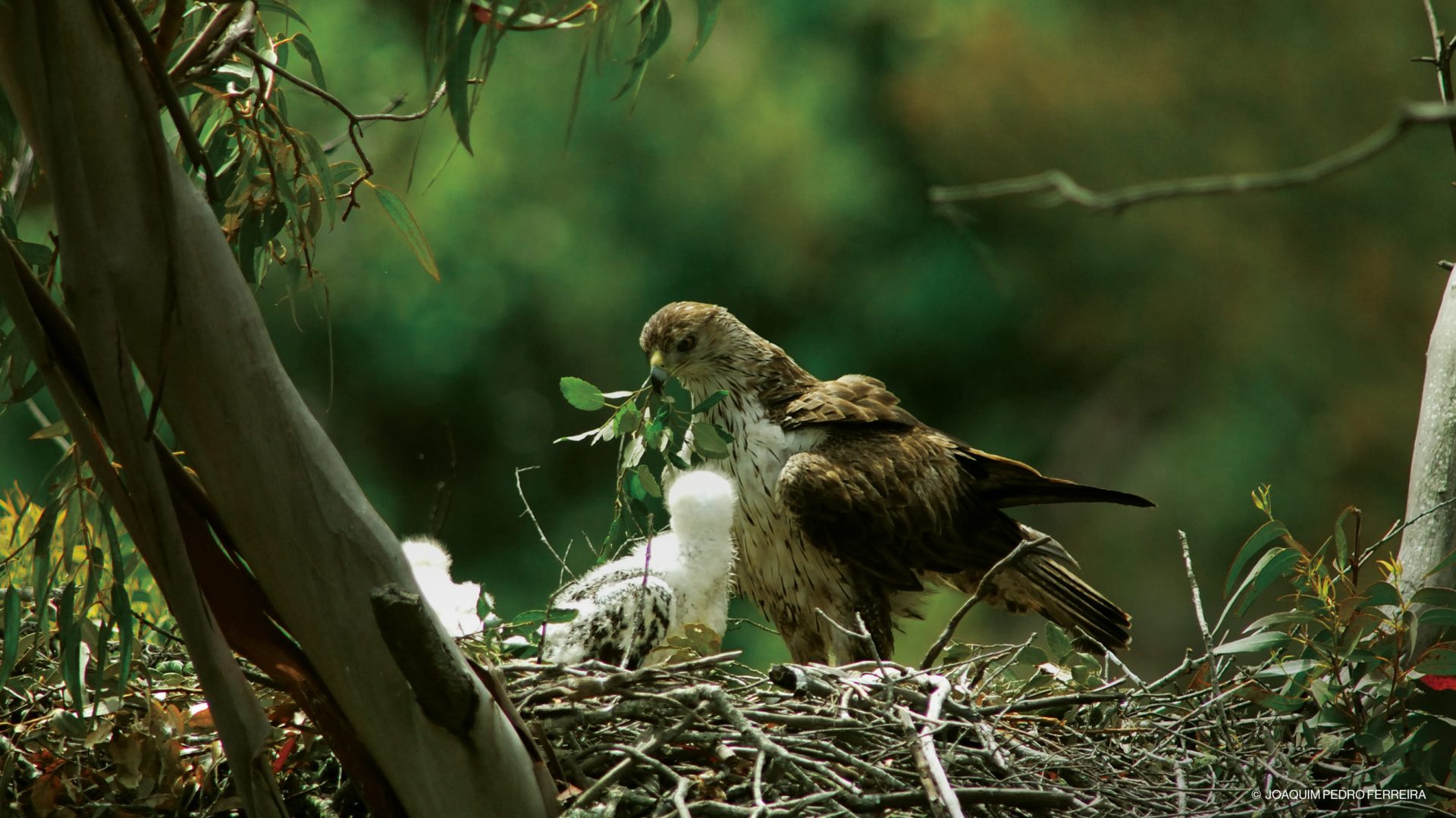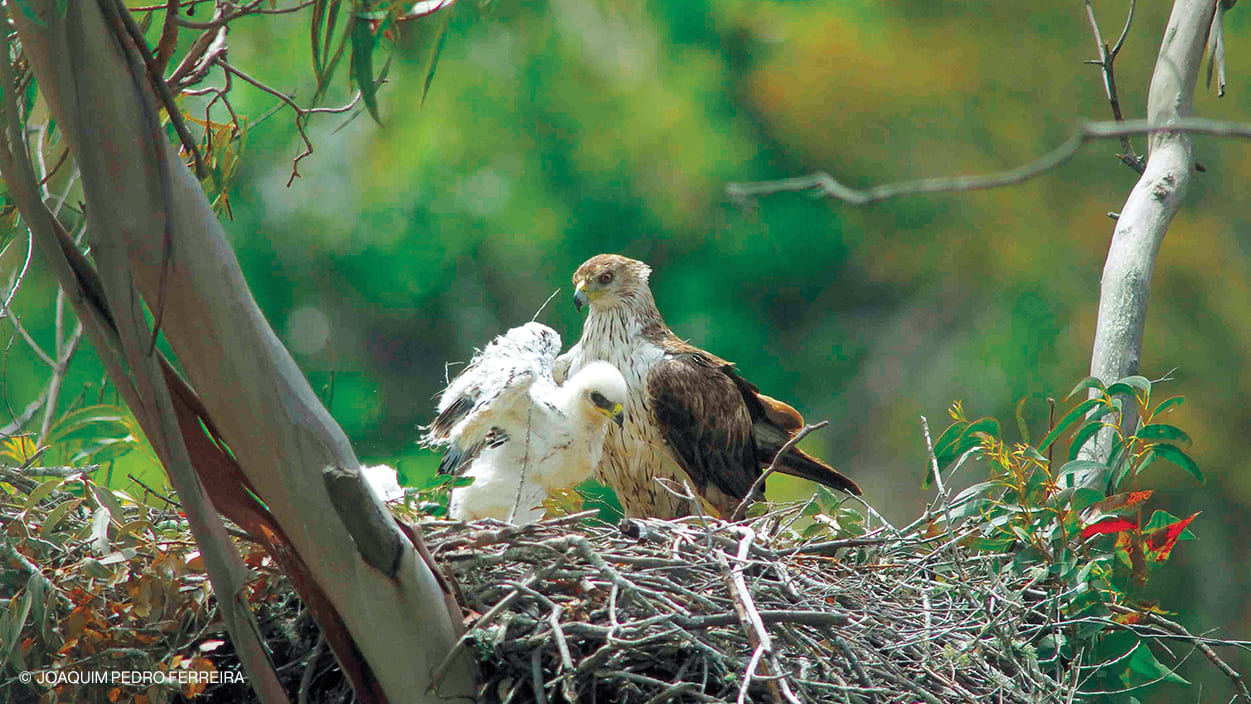Bonelli’s Eagle, also formerly known as the crestless hawk-eagle, is not an uncommon sight in the skies of Portugal. It is an imposing bird of prey which, as an adult, can have a wingspan of over one and a half metres.
A majestic, medium to large species, the Bonelli’s Eagle is a Mediterranean and Asian bird of prey native to Portugal, where it finds different habitats to support it all year round.
In the north and centre (Trás-os-Montes, Douro, Beiras interiores and Estremadura), steep valleys near streams and rivers are perfect nesting sites. To the south, the Bonelli’s Eagle chooses rugged areas forested with large trees, including cork oaks, pines and eucalyptus in which to build its nest, as is the case in the mountains of the Algarve and the south-west Alentejo.
For hunting, it prefers open areas — cork oak plains, pastures or agricultural land. Its diet is based on mammals, birds and sometimes reptiles. This includes, for example, wild rabbits, partridges, pigeons and grey herons. It was known as the hawk-eagle because it hunts other birds in flight. No prey — or potential predator — escapes its keen eyesight.
It is a monogamous species that usually nests between January and June. Normally, only one or two chicks are born in each clutch. After hatching, the female stays close by, while the male is tasked with bringing food.
With its dark brown wings, light tail with a broad dark terminal band, white belly and breast speckled with brown feathers, and a white spot on its back, the Bonelli’s eagle is as beautiful as it is difficult to spot. Its rarity makes it even more difficult to identify in Portugal.
It is classified as Endangered, according to the Red Book of Vertebrates of Portugal (2005). Human disturbance to habitat and food are among its main threats, including logging of large trees, forest loss, electrocution, wind farms, rural fires, recreational activities and hunting during the breeding season, adverse weather (storms, for example) and one disease in particular – trichomoniasis (caught from eating infected domestic pigeons). Overall, although its numbers were declining, it was considered a species of Low Concern (2019).





